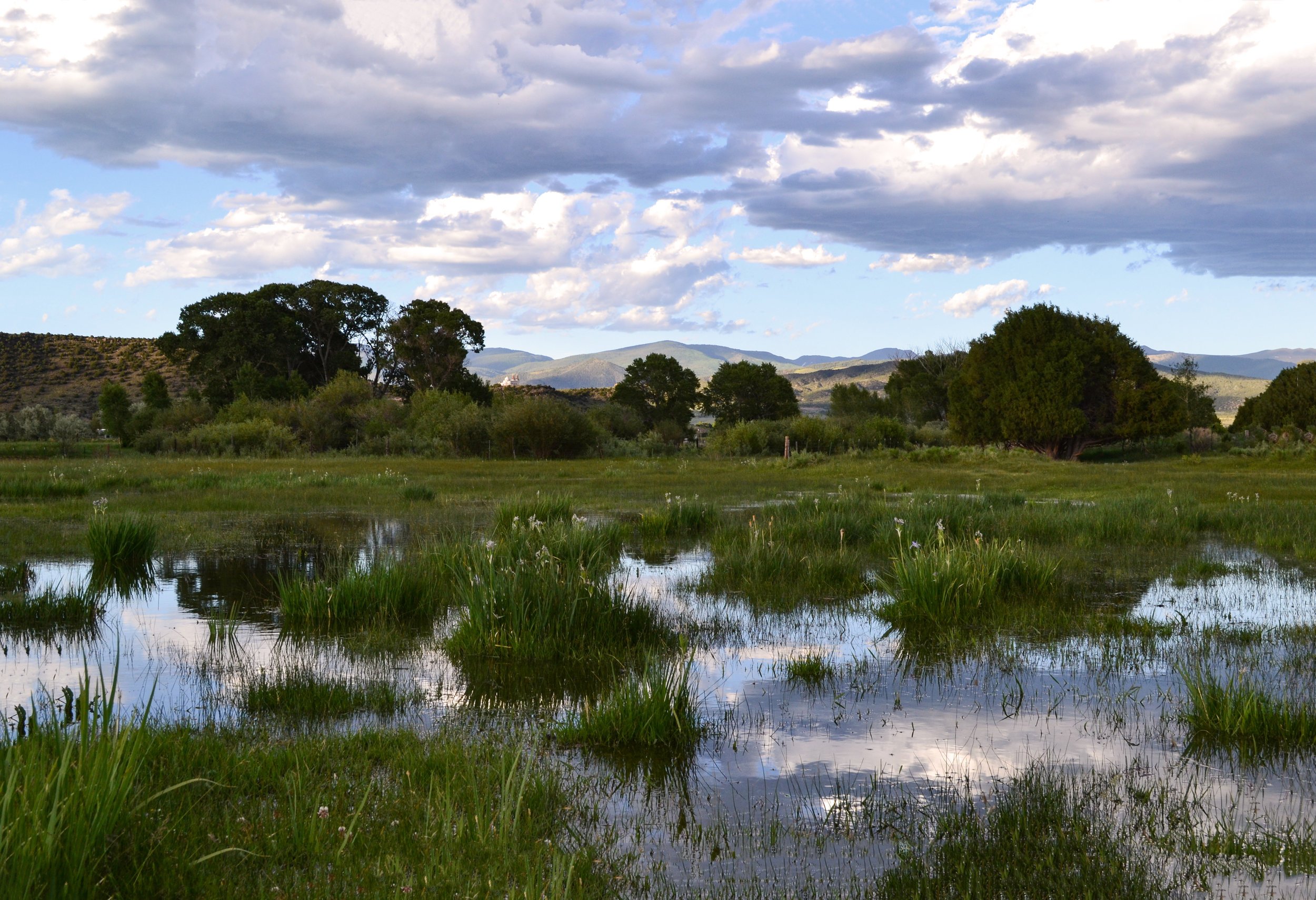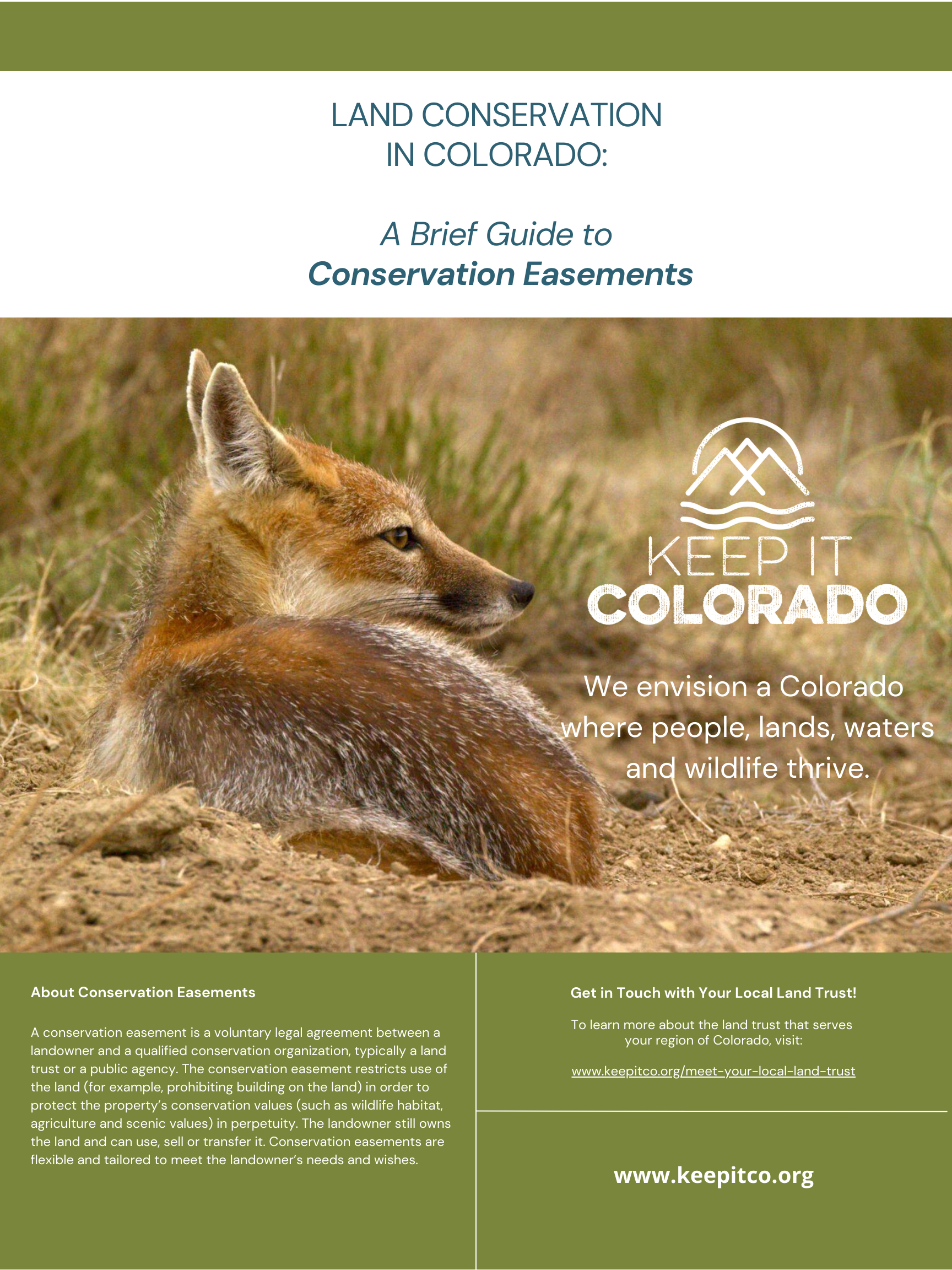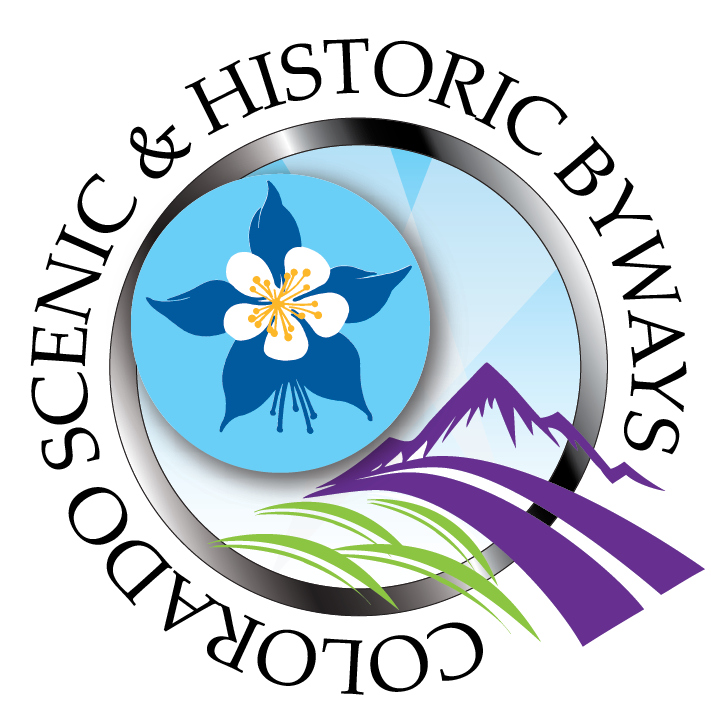“Conservation is not a luxury. Conservation is critical
to our way of life. ”
Conservation: What, how, who - and most importantly, WHY?
Conservation means many different things to different people, and it touches our lives in myriad ways. What does conservation mean to Keep It Colorado and our coalition? Who is conserving Colorado’s landscapes, and what tools are needed? How does conservation benefit people and wildlife? Read our Q&A to learn a few key aspects of this work.
Photo: John Fielder
What is conservation?
Conservation means many things to different people and organizations. To Keep It Colorado, conservation is about protecting what we have today so that people and wildlife can thrive in the future. Conservation is critical to creating healthy lands and waters, which we need not only to survive, but to sustain a high quality of life.
How is conservation different from preservation?
Conservation means protecting what we have now so that it is there for us – humans and wildlife – in the future. Preservation means protecting places and things from damage, or maintaining or keeping them in existence, while minimizing human impacts.
What is the urgency in conserving land?
Read Keep It Colorado’s op ed, Opinion: Critics of land conservation easements have twisted the concept beyond reality, in The Colorado Sun.
The United States is quietly losing its remaining forests, grasslands, deserts, and natural places at a blistering pace. Every 30 seconds, a football field worth of America’s natural areas disappears to roads, houses, pipelines, and other development. (Source: Conservation Science Partners, Loss and fragmentation of natural lands in the conterminous U.S. from 2001 to 2017) America the Beautiful, also known as 30x30, is a goal to protect 30% of lands and waters by 2030 for the benefit of all life - a goal that Keep It Colorado shares.
Photo: Linda Lidov
What is private land?
Private lands are lands not owned by federal, state, county or local governments.
Why is it important to conserve private lands?
About 60 percent of lands in Colorado are privately owned, and therefore present a significant opportunity to ensure that our state’s natural landscapes, agricultural areas, wildlife habitat and outdoor recreation areas are conserved for the future.
Who conserves privately owned land in Colorado?
Since 1965, land trusts and their partners have helped Colorado families conserve more than 3.3 million acres* of working lands, wildlife habitat and open spaces that define our state and contribute to our quality of life. Read about Keep It Colorado’s role.
*Sources: Keep It Colorado 2021 data collection from 22 land trusts in Colorado.
What is open space?
Open space is publicly or privately owned land that is protected from urbanization (paving or building). Open space on public lands is usually accessible to the public, and on private lands is sometimes accessible to the public, and may also be leased for agriculture. In Colorado, open space lands are often abundant with native plants and wildlife, and are home to threatened and endangered species. They can also serve as a buffer between urban areas and nearby development. Open space lands often feature trails that are used by walkers, hikers, bicyclists, horseback riders and dog walkers. Whether on public or private property, open space lands provide important wildlife habitat and create rich opportunities for viewing wildlife and beautiful natural scenery.
What is stewardship?
Stewardship is the job of supervising or taking care of something. A steward is a person who takes care of something. In Colorado, there is a growing ethic of land stewardship as more people recognize the important role humans play in taking care of the land. Every person can be a land steward on his or her own, or by getting involved with a land trust, open space agency or nonprofit stewardship organization that organizes volunteer stewardship activities.
Photo: Aspen Valley Land Trust
Where do Colorado voters stand on conservation and incentives?
Survey of Colorado voters in Sept.-Oct. 2023:
83% feel that more needs to be done to protect land, water and wildlife habitat in the state.
86% support the State Legislature continuing tax incentives for voluntary conservation, and over half (55%) strongly support continuing these incentives.
73% support increasing the cap on tax incentives, which has not changed since 2014.
Colorado College’s State of the Rockies Project 2022 Conservation in the West Poll:
83% support a national goal of protecting 30 percent of America’s lands and oceans by 2030.This is an increase of 9% compared to the same survey in 2020.
89% say that issues involving clean water, wildlife, and public lands are important in deciding whether to support an elected public official.
Where do Colorado voters stand on the work of land trusts in relation to conservation?
Understanding and supporting the work of land trusts/Dec 2020 survey:
96% have a favorable opinion of land trusts once they hear a quick of explanation of land trusts’ work, and more than half say that actions related to conserving the land are extremely important responsibilities for land trusts to undertake.
85-91% believe that important land trust activities include conserving wildlife habitat, restoring forest health, conserving lands along streams and rivers, conserving mountain areas, conserving lands that have rare or important plant life, conserving historic lands, and conserving native prairies and grasslands
Where do Coloradans stand on climate change?
Understanding and supporting the work of land trusts/Dec 2020 survey:
88% say “Yes, climate change is occurring.” Of those, here is the breakdown across political party affiliations:
Republicans: 73%
Independents: 90%
Democrats: 98%
87% believe in protecting the land from climate change and ensuring that future generations can continue enjoying it as they have.
79% believe that conserving lands that are more sensitive to climate change is an important land trust responsibility.
Colorado College’s State of the Rockies Project 2022 Conservation in the West Poll:
69% say that there is enough evidence of climate change that action should be taken.
What’s the connection between conservation and climate change?
More extreme weather patterns, chronic drought, a longer and more intense wildfire season, and diminished snowpack are becoming more prevalent. While land conservation alone cannot end these climate threats, it can and does play a key role in creating natural solutions to climate change, mitigating its impacts, and creating more resilient and adaptable landscapes and communities. Examples of effective conservation strategies include sequestering (storing) carbon in plants and soils, removing harmful gases from the atmosphere, protecting wildlife habitat, and increasing the diversity of plants and animals that make up a healthy ecosystem. Read our Policy on Climate Policy.
Photo: Pam Houston
Who benefits from conservation?
Every living person and animal benefits from conservation. Conserving our lands and waters is critical not only to our survival but to our quality of life. Because of conservation, we have clean water to drink and clean air to breathe; vital food sources produced by our ranchers and farmers; healthy habitat and safe passage for our wildlife; and parks and open spaces where we can connect with nature. Without conservation, all of these things are at risk of disappearing.
For every $1 invested in conservation, the public receives up to $12 in benefits. (A CSU Study: Investing in Colorado, 2017)
Photo: Eagle Valley Land Trust
Community + connection
Conservation connects people to the places they love and brings people together around that shared love for Colorado. Connection to the land in Colorado is varied, and it runs deep. For everyone – Indigenous peoples who have ancestral ties to these lands, families who have farmed and ranched these lands for multiple generations, people who have grown up playing in Colorado’s natural landscapes, and those who have more recently arrived – connection to the land is personal. Conservation nurtures that connection and provides a chance for us all to act on our shared values and goals – honoring the past while helping us prepare for the future.
From volunteering together to steward a local trail, to joining a nature hike, to learning about the role wildlife plays in preserving the land, to enjoying a walk in the local park - opportunities to connect with the land and with each other through conservation abound.
Ecology
Conservation is critical to keeping Colorado’s natural areas healthy and abundant for the people and wildlife here.
Photo: Sean Boggs for EDF
For example, by conserving natural areas and forests, we can reduce runoff and toxics in the lakes, rivers and streams that bring us clean water for drinking and recreating in.
By protecting native plants and trees, we help control erosion. This encourages more growth of those plants, and provides habitat animals, birds and fish need to survive.
By protecting and restoring habitat from the prairies to the mountains, we enable the survivability of the wildlife that call Colorado home.
Quality of life
No matter where one lives – in the city, in a mountain town or in a rural community – conservation contributes to a high quality of life in Colorado for both people and wildlife.
Keeps working farm and ranch lands in production, putting food on Coloradans’ tables every day and supporting a way of life for many of our rural families.
Keeps open spaces open so we can enjoy the land and be close to nature – whether we’re hiking, biking, hunting, fishing, or going for a walk around the local park.
Preserves the signature landscapes, views and natural beauty Colorado is known for. We see it whether we’re driving down the highway or walking through the local park.
Photo: Crested Butte Land Trust
Economy
Conservation tells a clear and strong economic story in Colorado.
Recreation: 90 percent of Coloradans participate in outdoor recreation activities in Colorado each year. Conservation creates opportunities for people to hike, camp, see wildlife, fish and hunt, and for companies that manufacture and sell equipment for those activities – pumping dollars into our state’s economy. (The Economic Benefits of Great Outdoors Colorado and the Conservation Trust Fund, 2018.)
Tourism: 15 percent of leisure visitors to Colorado come specifically for the parks, trails, rivers, open spaces, recreation amenities, and wildlife. People who come primarily to visit the outdoors are estimated to spend $1.21 billion annually in Colorado, generating tens of millions of dollars in state and local tax revenues. (The Economic Benefits of Great Outdoors Colorado and the Conservation Trust Fund, 2018.)
Agriculture: In the agricultural sector alone, new investments in conservation programs have the potential to pump hundreds of millions of dollars into Colorado’s economy, and give a much-needed boost to our rural communities, too. (Economic impact of future federal conservation easement investments on (rural) Colorado communities, 2020). (View our infographic.)
Photo: John Fielder
What is a land trust?
A land trust is a nonprofit organization organized as a charitable entity under the laws of the United States and Colorado. Land trusts work with landowners and communities to voluntarily conserve lands located in the area the land trust serves. In Colorado, land trusts are located in communities across the state, and some operate statewide or nationally. Land trusts are run by dedicated, professional staff and, in most cases, by a volunteer board.
What does a land trust do?
Local, regional and statewide land trusts help conserve land for natural, recreational, scenic, historical and productive values – protecting the land in perpetuity and removing the threat of development. Land trusts can purchase land outright in order to permanently protect it, or they may:
Accept donations of land or the funds to purchase land.
Accept a bequest or accept the donation of a conservation easement, permanently limiting the type and scope of development that can take place on the land.
Purchase conservation easements.
Photo: Rio de la Vista
How many land trusts are there?
Keep It Colorado’s coalition serves approximately 25 land trusts in the state of Colorado. Since 1965, land trusts and their partners have helped Colorado families conserve more than 3.2 million acres of working lands, wildlife habitat and open spaces that define our state and contribute to our quality of life. In the U.S., more than 1,700 local and regional land trusts are protecting more than 37 million acres of farmland, wetlands, ranches, forests, watersheds, river corridors and other land types, and several national land trusts have protected millions more acres.
Photo: Montezuma Land Conservancy
How different are land trusts from each other? How are they similar?
Colorado’s land trusts vary greatly in geographic location, scope and scale, as well as in the conservation programs and initiatives they develop. They also work in myriad ways to connect people in local communities with conserved lands and with each other. They all share common goals to protect and conserve land for its natural, recreational, scenic, historic, ecological and agricultural values.
How can people get involved with land trusts?
Land trusts in Colorado offer many ways for people in their local communities to get involved. Some land trusts organize volunteer activities such as trail building, fence removal or habitat protection. Others arrange outdoor education programs and hands-on experiences for school children and community groups. Some offer guided tours and hikes on conserved properties, or social gatherings that bring people together over a meal. All land trusts invite their community members to support the ongoing work of conservation by advocating for public policy, and by giving a financial donation. Meet your local land trust.
What is Keep It Colorado’s relationship with land trusts?
Keep It Colorado brings the land trust community together to collaborate and strategize for the future, advocate for good policy, and creatively solve challenges. Coordinated efforts are needed to represent the needs and priorities of Colorado’s vastly different communities – and help us make better plans for Colorado’s land and water future. Watch our video!
Keep It Colorado is also a member and partner of the Land Trust Alliance, a national organization that provides a variety of valuable complementary services to land trusts in our coalition.
What is a public agency or open space program?
Some state agencies, and many local governments including cities, counties, recreation districts and conservation districts, have publicly funded local and regional open space programs. These programs work to preserve urban and rural open space and natural areas by providing planning, management, and maintenance of neighborhood parks and open space. Many hold conservation easements as well as acquire land through methods such as direct purchase, transferred development rights and intergovernmental transfers. Like land trusts, local governments work with their neighbors to voluntarily conserve Colorado lands.
What is Keep It Colorado’s relationship with public agencies?
Keep It Colorado’s coalition includes public agencies - particularly counties, parks/open space departments, cities, special districts and state agencies. Membership is also open to federal agencies, education institutions and other publicly funded agencies. We are the only organization that connects public agencies with land trusts, creating a more cohesive and collaborative approach to public and private land and water conservation. And we are the only entity advocating for public policy that protects conservation easement tools that many public agencies use in open space protection.
Keep It Colorado is also a member and partner of the Colorado Open Space Alliance.
Photo: Douglas Land Conservancy
Photo: Melissa Daruna
What is a conservation easement?
A conservation easement is a voluntary legal agreement between a landowner and a qualified conservation organization, typically a land trust or a public agency. The conservation easement restricts use of the land (for example, prohibiting building on the land) in order to protect the property’s conservation values (such as wildlife habitat and scenic values) in perpetuity. The landowner still owns the land and can use, sell or transfer it. Conservation easements are flexible and tailored to meet the landowner’s needs and wishes.
The IRS statutory requirements say that “A deductible conservation easement is an easement granted for preservation of land areas for outdoor recreation, protection of habitat, preservation of open space, or preservation of historically important land area or buildings.”
What does the process look like for donating a conservation easement?
Every land trust operates differently and follows its own process for conserving land with conservation easements. We have outlined the general steps in Land Conservation in Colorado: A Brief Guide to Conservation Easements.
What is a conservation easement tax credit?
When a landowner protects property by voluntarily donating a conservation easement to a qualified land trust, this charitable act qualifies him or her for a transferable state income tax credit. The state’s program enables the landowner to turn a portion of the equity he or she has in the land into a marketable tax credit – and taxpayers seeking to lower their tax liability can purchase the tax credit from the landowner. The value of the credit is 90 percent of the value of the donated easement value. Learn more about conservation easement tax credits.
What resources are available to landowners?
Download our free resources:




























